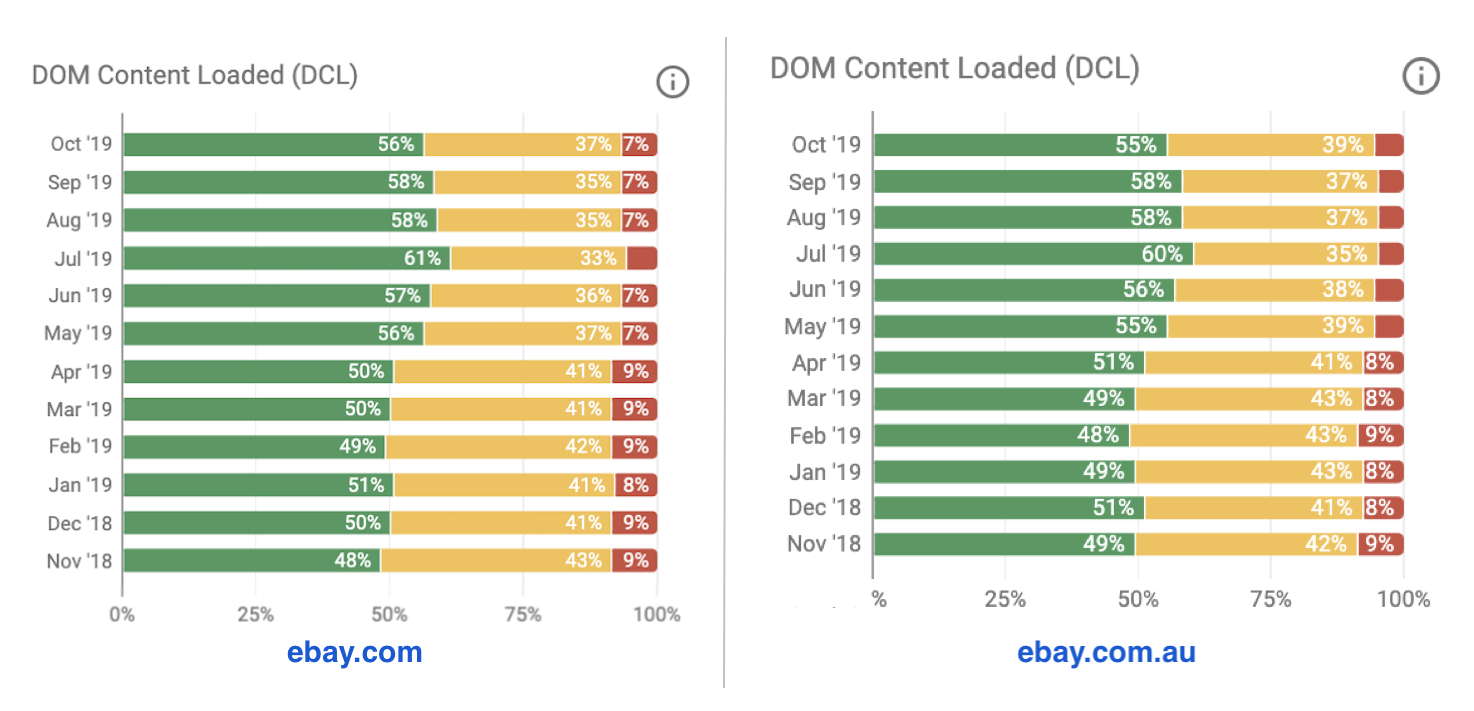Advertisement
How eBay Made Their Site Faster (One Tiny Cut at a Time)
- Get link
- X
- Other Apps
How eBay Made Their Site Faster (One Tiny Cut at a Time)
You know how most tech companies brag about their big, flashy performance improvements? Well eBay took the complete opposite approach. Instead of making one huge change, they made literally thousands of tiny optimizations. And guess what? It worked way better than anyone expected.

Not the most exciting graph, but those small dips add up!
The "Death by 1000 Papercuts" Problem
Back in 2021, eBay's engineering team noticed something frustrating - their site was getting slower, but there wasn't one obvious culprit. It was more like:
- A few extra milliseconds here
- Some bloated JavaScript there
- Unoptimized images everywhere
Individually, none of these were dealbreakers. But combined? The site felt sluggish compared to competitors. And in ecommerce, speed literally equals money.
The Wake-Up Call
The numbers didn't lie:
| Metric | Impact |
|---|---|
| 100ms delay | 1% drop in sales |
| 500ms delay | Up to 5% drop in conversions |
When you're processing billions in sales, those percentages hurt. Bad.
The "Speed by 1000 Cuts" Strategy
Instead of betting everything on a massive rewrite (which rarely works), eBay took a surgical approach:
1. Measure Everything
They instrumented their entire stack to find exactly where time was being lost:
- Real user monitoring (RUM) for actual experience data
- Synthetic tests running 24/7
- Custom dashboards showing performance by component
2. Fix the Small Stuff
Some actual changes they made (that most teams would ignore):
- Shaved 3KB off their header by optimizing SVG icons
- Reduced API response sizes by removing unused fields
- Lazy-loaded non-critical CSS (who knew?)
One engineer described it as "performance gardening" - constantly pruning and nurturing rather than big bang changes.
Technical Deep Dive
Here's an example of their micro-optimization approach:
// Before - bloated response
{
"item": {
"id": "123",
"title": "Rare collectible",
// 20 more fields...
"metadata": {...} // Rarely used
}
}
// After - trimmed down
{
"i": "123", // Shorter field names
"t": "Rare collectible",
// Only essential fields
"m": null // Loaded separately when needed
}
This one change saved ~200 bytes per item. Doesn't sound like much until you realize they serve billions of listings daily.
The Results
After 18 months of this obsessive optimization:
- Page load time: Reduced by 40% (2.8s → 1.7s)
- API response size: Down 35% on average
- Conversion lift: 2.3% increase (huge for their scale)
- Infrastructure costs: Dropped 15% from reduced bandwidth
The crazy part? No single change accounted for more than 5% of the improvement. It was all about the compounding effect.
Lessons Learned
Key takeaways from eBay's journey:
- Small ≠ Insignificant: Tiny optimizations compound at scale
- Culture Matters: Made performance everyone's responsibility
- Data-Driven: Measured impact of every change
- Sustainable: Built processes to prevent regression
As one engineer put it: "We stopped chasing silver bullets and started appreciating marginal gains."
What's Next?
eBay isn't done optimizing. Current focus areas:
- AI-powered dynamic asset loading
- Predictive prefetching based on user behavior
- Edge computing to reduce latency globally
They're also open-sourcing some of their tools so other teams can benefit. Pretty cool move.
Why This Approach Wins
While everyone else was waiting for some magical new framework to solve performance, eBay proved that:
"Consistent, incremental improvements outperform occasional big leaps in the long run."
In an industry obsessed with shiny new things, eBay's "slow and steady" approach is refreshingly effective.
Want the full technical breakdown? Check out eBay's original article. It's surprisingly readable for an engineering deep dive!
- Get link
- X
- Other Apps
